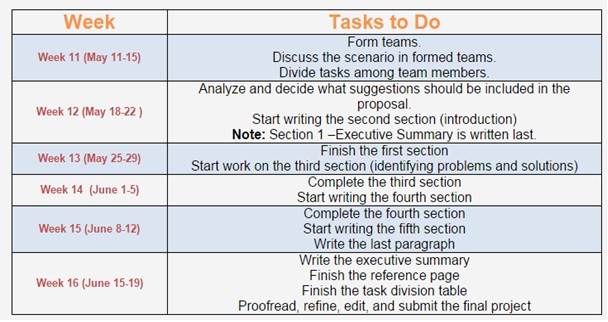Introduction:
Designing a course to be delivered in a blended format for students who are on the other side of the globe is very challenging due to many environmental factors, mainly technological, administrative, and linguistic. Not only do these challenges govern the process of course design, but they impact the final outcomes as well. In this article, we share: (1) Design features of courses that are now being taught in a blended format for Chinese students (who are in China) and, (2) how these features were responsive to the technological, administrative and linguistic challenges imposed by the students’ learning environment.
This is a three-part blog post that will cover one key challenge and solution each week.
Challenges, Problems and Design Solutions:
#1: Administrative Challenge: Large Class Size
The first administrative challenge is related to classroom size in the university where the courses are offered. The average class size is about 50 students per section. For each section, there is an Instructor of Record who is responsible for (1) designing course content and putting it up online in Blackboard LMS, (2) designing assessments and (3) grading major assessments as well as submitting students’ final grades upon completion of the course. In addition to the main Instructor of Record, for each section, there is a Cooperating Teacher (CT) who is responsible for (1) teaching the content of the course designed by the Instructor of Record, (2) meeting the students for office hours, and (3) sharing grading responsibility with the Instructor of Record. The main instructor is based in the US, whereas the CT is based in China. The large classroom size led to a problem for the Instructor of Record and the Cooperating Teacher. We, the teaching team and the instructional designers, noticed that there was a lot of time being spent on grading and responding to students’ e-mails regarding FAQs and feedback. In this situation, we had to think about an effective solution to minimize the amount of time spent on grading and responding to students’ emails. Spending a lot of time on grading, despite the fact that grading duties were shared between the CT and the Instructor of Record, was not beneficial for the instructors who wanted to spend time on content design and delivery. At the same time, we wanted to keep the students engage in the course by giving them weekly homework, empowering them through detailed feedback and tracking their progress throughout the course.
As a solution to this problem, during the design process, we decided to adjust the assessment schedule to a bi-weekly assessment, such as grammar quizzes in the course named “Writing in the professions” and blog posts in the course titled “Global and social networking” and weekly homework assignments, such as readings, watching thematic videos dedicated to the material covered in class and writing exercises from the textbook. We also implemented group projects to increase collaboration and minimize the number of papers that needed to be graded. For each major assessment (memo, e-mail, business letter, business report, and business proposal writing assignments) we created a rubric with explicit instructions in order to avoid FAQs coming via email. Indeed, providing detailed, step-by-step instructions on how to complete assignments was an effective solution to reducing the amount of incoming FAQs in emails. Also, scheduling the assessments to a bi-weekly format and implementing rubrics made the grading tasks of the instructors much easier and more effective.
Example of Assessment Methods and Grading Scale:
Assignment Due Dates:
Week by Week Timeline for Final Project:
Example of an assignment link:
Example of a rubric for grading a business letter assignment:
Check back next week for Part 2 of this 3-part blog post.
About the Authors:
Ahmed Lachheb is the Instructional Technology Support Specialist and Instructional Designer at the Center for Teaching Excellence and Learning Technologies, at Fort Hays State University. He holds a Master’s Degree in Educational Technology from Grand Valley State University, College of Education. Ahmed is famously known as the “Blackboard Guru” on Fort Hays campus. He is passionate about educational technology, instructional design for language learning, and best practices to integrate Ed Tech tools for good teaching and learning experiences. He’s also a young scholar with a few publications and conference proceedings in the field of instructional systems, design and Ed Tech. Ahmed is originally from Sfax, Tunisia, and he came to the US in 2010 as part of the NESA UGRAD Fulbright Exchange Program. He’s married, and his love to cook almost equals his love of his job and his wife (aka the love of his life, Victoria Abramenka).
Victoria Abramenka-Lachheb is a full-time instructor in the Department of Communications Studies at Fort Hays State University. She holds a Master’s Degree in Communications from Grand Valley State University School of Communications. Victoria teaches social and global networking, writing in the professions, business and professional presentations and introduction to business English courses both on campus and at Sias International University through the online China program. Victoria is passionate about foreign languages, cross-cultural communication and technologies in education, and she always seeks opportunities to apply best practices and integrate the best technological tools to meet learning objectives.








